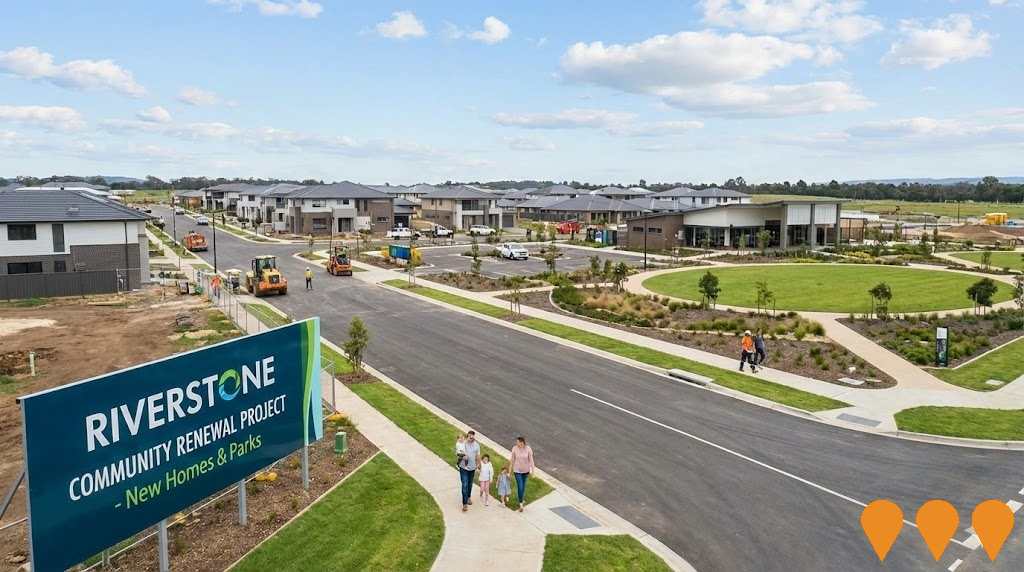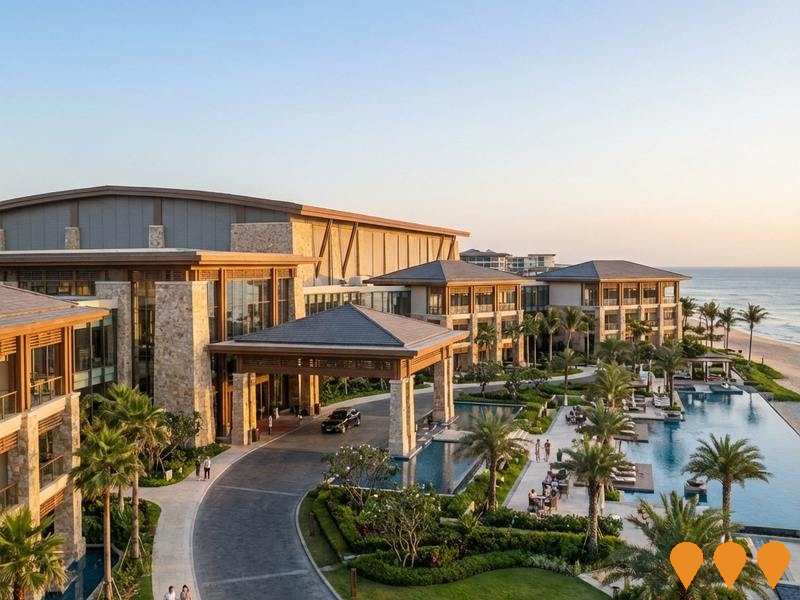Chart Color Schemes
est. as @ -- *
ABS ERP | -- people | --
2021 Census | -- people
Sales Activity
Curious about local property values? Filter the chart to assess the volume and appreciation (including resales) trends and regional comparisons, or scroll to the map below view this information at an individual property level.
Find a Recent Sale
Sales Detail
Population
Budgewoi - Buff Point - Halekulani has seen population growth performance typically on par with national averages when looking at short and medium term trends
Budgewoi - Buff Point - Halekulani's population is around 10,087 as of Aug 2025. This reflects an increase of 359 people since the 2021 Census which reported a population of 9,728 people. The change was inferred from the estimated resident population of 9,968 from the ABS as of June 2024 and an additional 23 validated new addresses since the Census date. This level of population equates to a density ratio of 1,081 persons per square kilometer. Budgewoi - Buff Point - Halekulani's growth rate of 3.7% since the 2021 census exceeded the SA4 region's growth rate of 3.1%. Population growth was primarily driven by overseas migration contributing approximately 51.3% of overall population gains during recent periods, although all drivers including natural growth and interstate migration were positive factors.
AreaSearch is adopting ABS/Geoscience Australia projections for each SA2 area released in 2024 with 2022 as the base year. For areas not covered by this data, AreaSearch utilises NSW State Government's SA2 level projections released in 2022 with 2021 as the base year. Growth rates by age group from these aggregations are applied to all areas for years 2032 to 2041. Future population trends indicate an increase just below the median of national areas, with the area expected to expand by 1,290 persons to 2041 based on latest population numbers, resulting in a total increase of 11.6% over the 17 years.
Frequently Asked Questions - Population
Development
Residential development activity is lower than average in Budgewoi - Buff Point - Halekulani according to AreaSearch's national comparison of local real estate markets
Budgewoi - Buff Point - Halekulani has seen approximately 24 dwelling approvals annually over the past five financial years, totalling 122 homes. As of FY-26, six approvals have been recorded. On average, around 2.1 people moved to the area per new home constructed between FY-21 and FY-25, indicating solid demand supporting property values. The average construction cost value for new homes is $284,000, reflecting more affordable housing options compared to regional norms.
This financial year has seen $739,000 in commercial approvals, demonstrating the area's residential nature. Compared to Greater Sydney and nationally, Budgewoi - Buff Point - Halekulani has around two-thirds the rate of new dwelling approvals per person and ranks among the 31st percentile of areas assessed, resulting in relatively constrained buyer choice and interest in existing homes. Recent construction comprises 90% standalone homes and 10% townhouses or apartments, preserving the area's suburban nature with an emphasis on detached housing attracting space-seeking buyers. With around 557 people per dwelling approval, Budgewoi - Buff Point - Halekulani reflects a highly mature market.
Future projections suggest the area will add approximately 1,170 residents by 2041. At current development rates, housing supply may struggle to match population growth, potentially heightening buyer competition and supporting price increases.
Frequently Asked Questions - Development
Infrastructure
Budgewoi - Buff Point - Halekulani has moderate levels of nearby infrastructure activity, ranking in the top 50% nationally
The impact of local infrastructure changes on an area's performance is significant. AreaSearch has identified 11 projects that could potentially affect the region. Notable projects include the Lake Munmorah Shopping Centre Expansion, Waratah Super Battery, Kanwal-Lake Haven-Gorokan Growth Corridor (Warnervale East / Greater Warnervale), and Darkinjung LALC & Landcom Housing Project. The following list provides more details on those likely to have the most relevance.
Professional plan users can use the search below to filter and access additional projects.
INFRASTRUCTURE SEARCH
 Denotes AI-based impression for illustrative purposes only, not to be taken as definitive under any circumstances. Please follow links and conduct other investigations from the project's source for actual imagery. Developers and project owners wishing us to use original imagery please Contact Us and we will do so.
Denotes AI-based impression for illustrative purposes only, not to be taken as definitive under any circumstances. Please follow links and conduct other investigations from the project's source for actual imagery. Developers and project owners wishing us to use original imagery please Contact Us and we will do so.
Frequently Asked Questions - Infrastructure
Central Coast Desalination Plant
A proposed 30 ML/day reverse osmosis desalination plant to be built adjacent to the existing Toukley Sewage Treatment Plant. The project will provide a climate-independent water supply for the Central Coast region during severe drought, using a direct ocean intake between Jenny Dixon Beach and Pelican Point Beach and discharging brine via the existing Norah Head ocean outfall. The plant is designed to improve water security and system resilience for up to 250,000 residents.
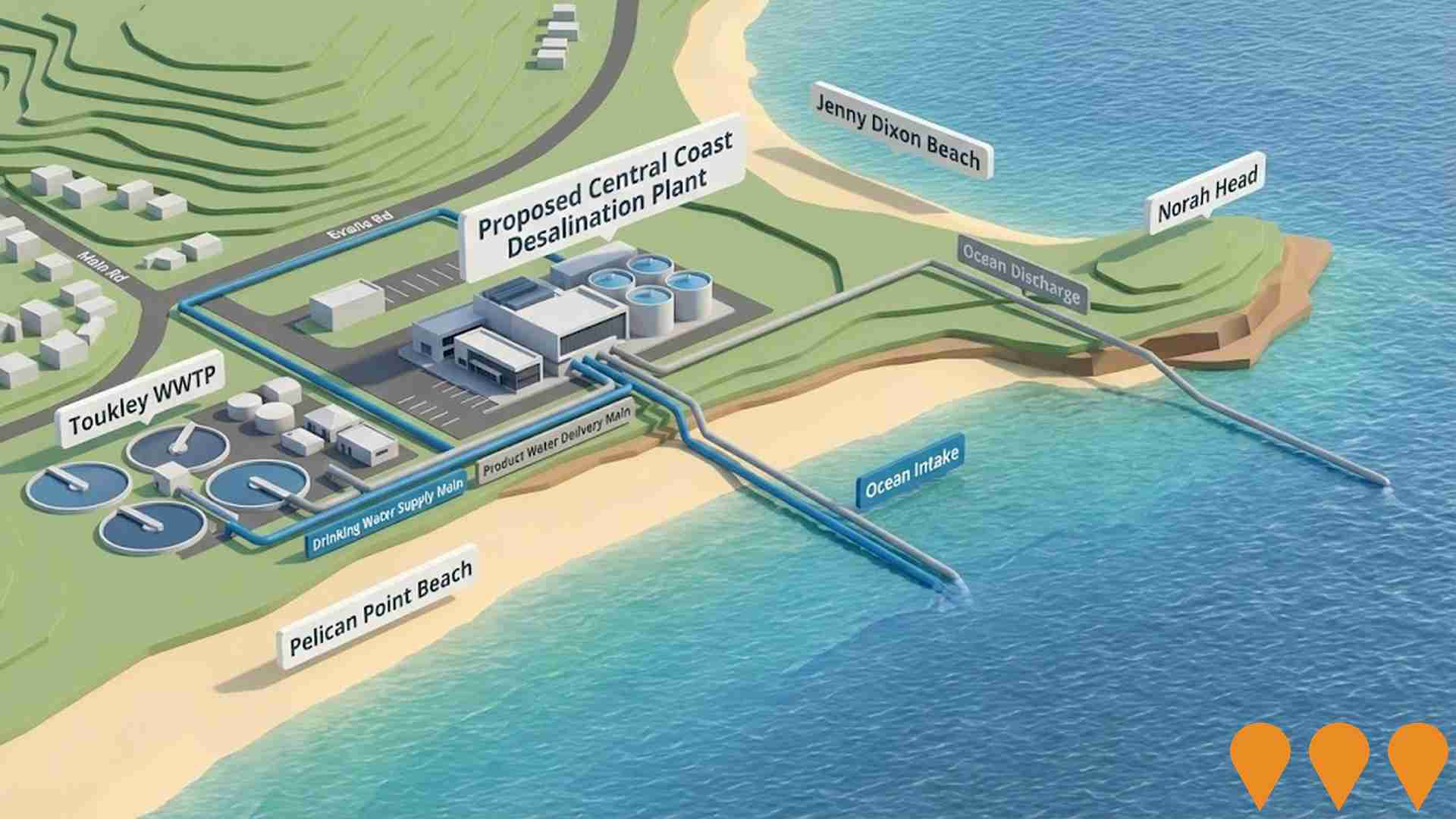
High Speed Rail - Newcastle to Sydney (Stage 1)
The first stage of the proposed National High Speed Rail network aims to connect Newcastle to Sydney via the Central Coast, reducing travel time to approximately one hour with trains reaching speeds up to 320 km/h. The project is focused on the development phase, which includes design refinement, securing planning approvals, and corridor preservation. It is being advanced by the Australian Government's High Speed Rail Authority (HSRA). Stations are planned for Broadmeadow, Lake Macquarie, Central Coast, and Central Sydney. The long-term vision is a national network connecting Brisbane, Sydney, Canberra, and Melbourne.
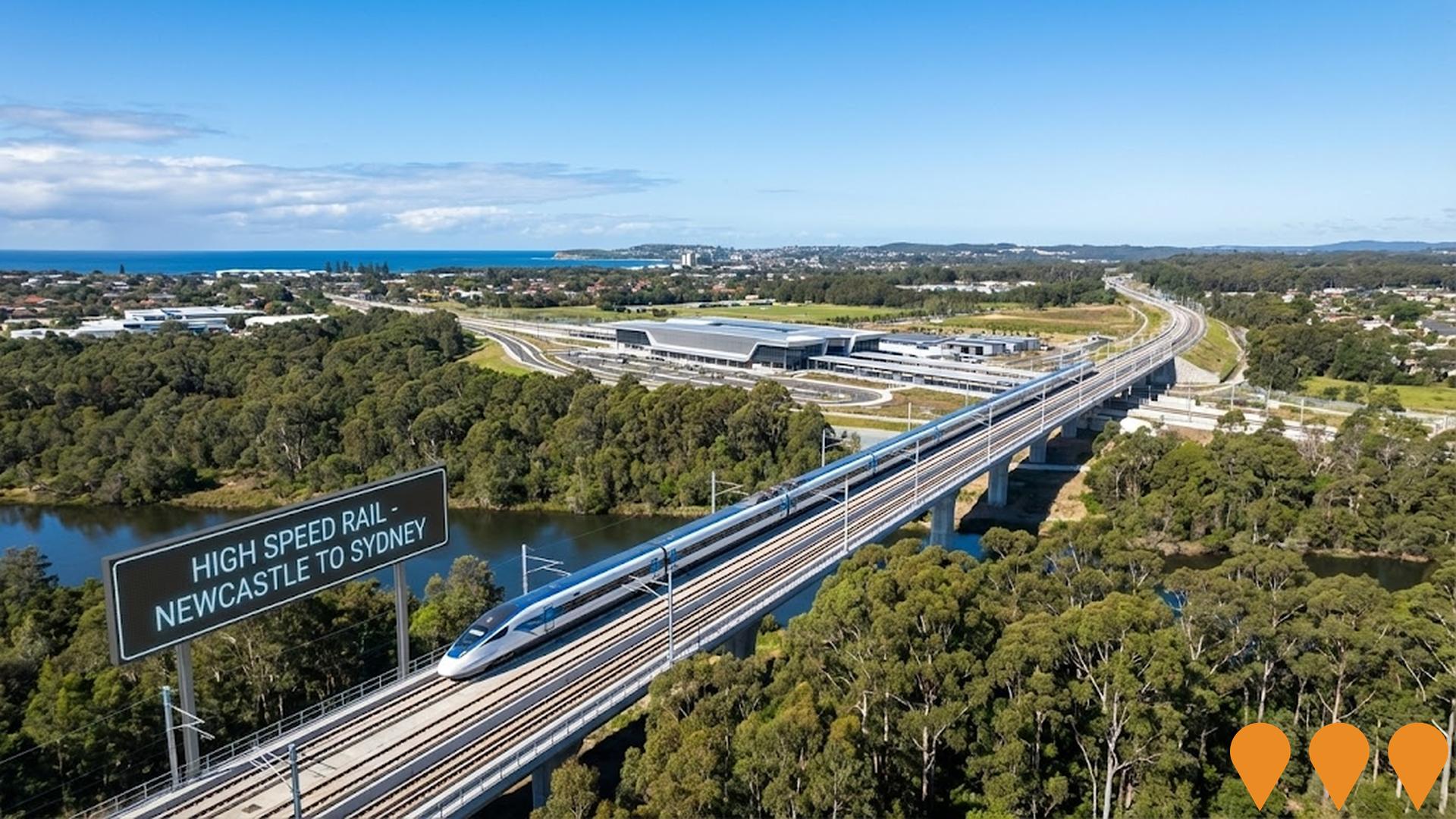
Lake Munmorah Shopping Centre Expansion
Expansion of the existing Lake Munmorah Shopping Centre at the corner of Pacific Highway and Tall Timbers Road, delivering additional specialty retail, more parking and improved access to support growth in the Greater Lake Munmorah and Northern Lakes area.
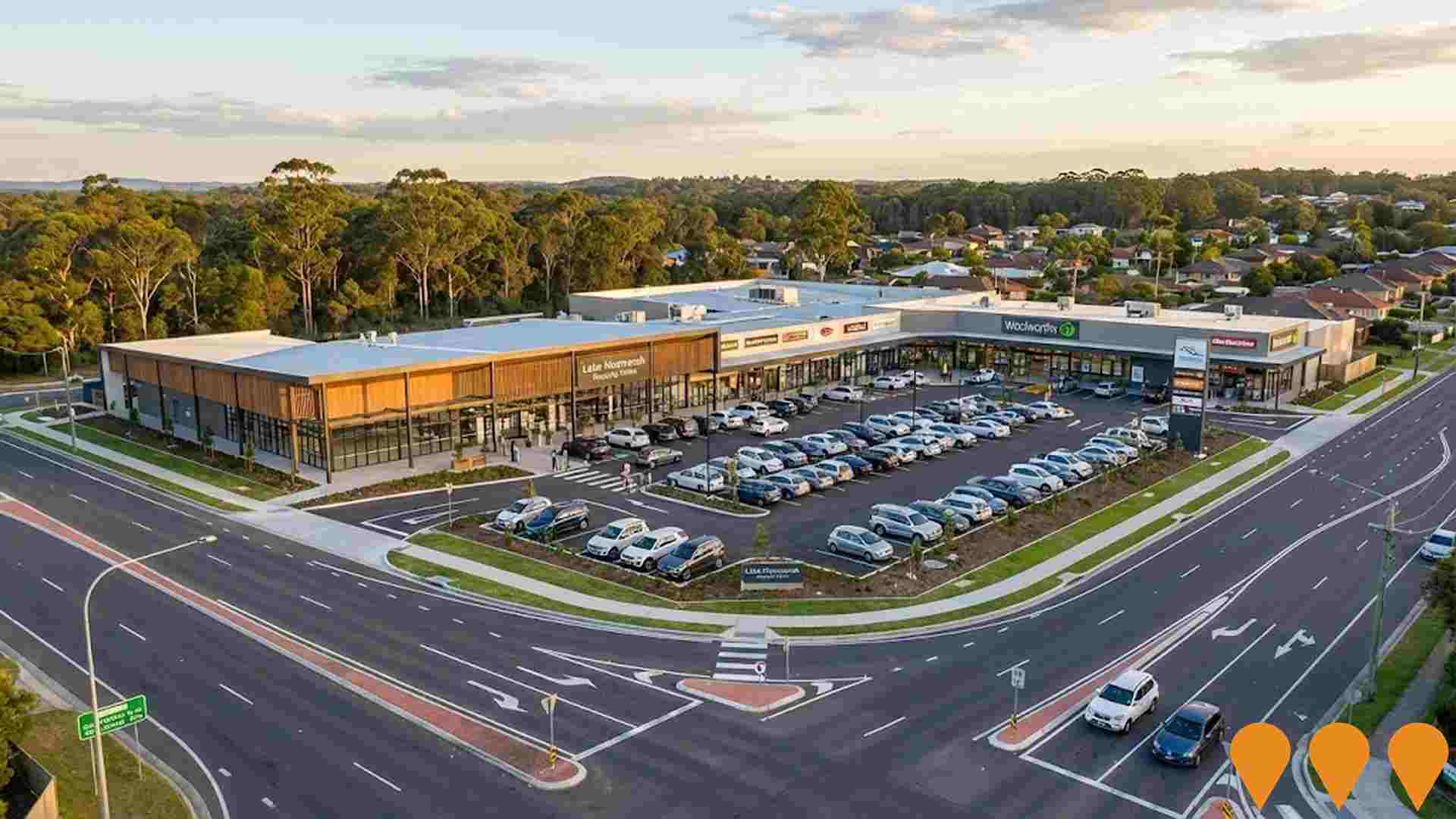
Wyong Hospital Redevelopment
The $200 million Wyong Hospital Redevelopment (completed 2021-2022) delivered a new six-storey clinical services building (Block H) with expanded emergency department, ICU, paediatrics, medical imaging (including the hospital's first MRI), additional inpatient beds, and a medical assessment unit; plus refurbishment of existing facilities adding operating theatre capacity, expanded medical day unit, transit lounge, and cancer day unit expansion. The project significantly increased healthcare capacity for the Central Coast community.
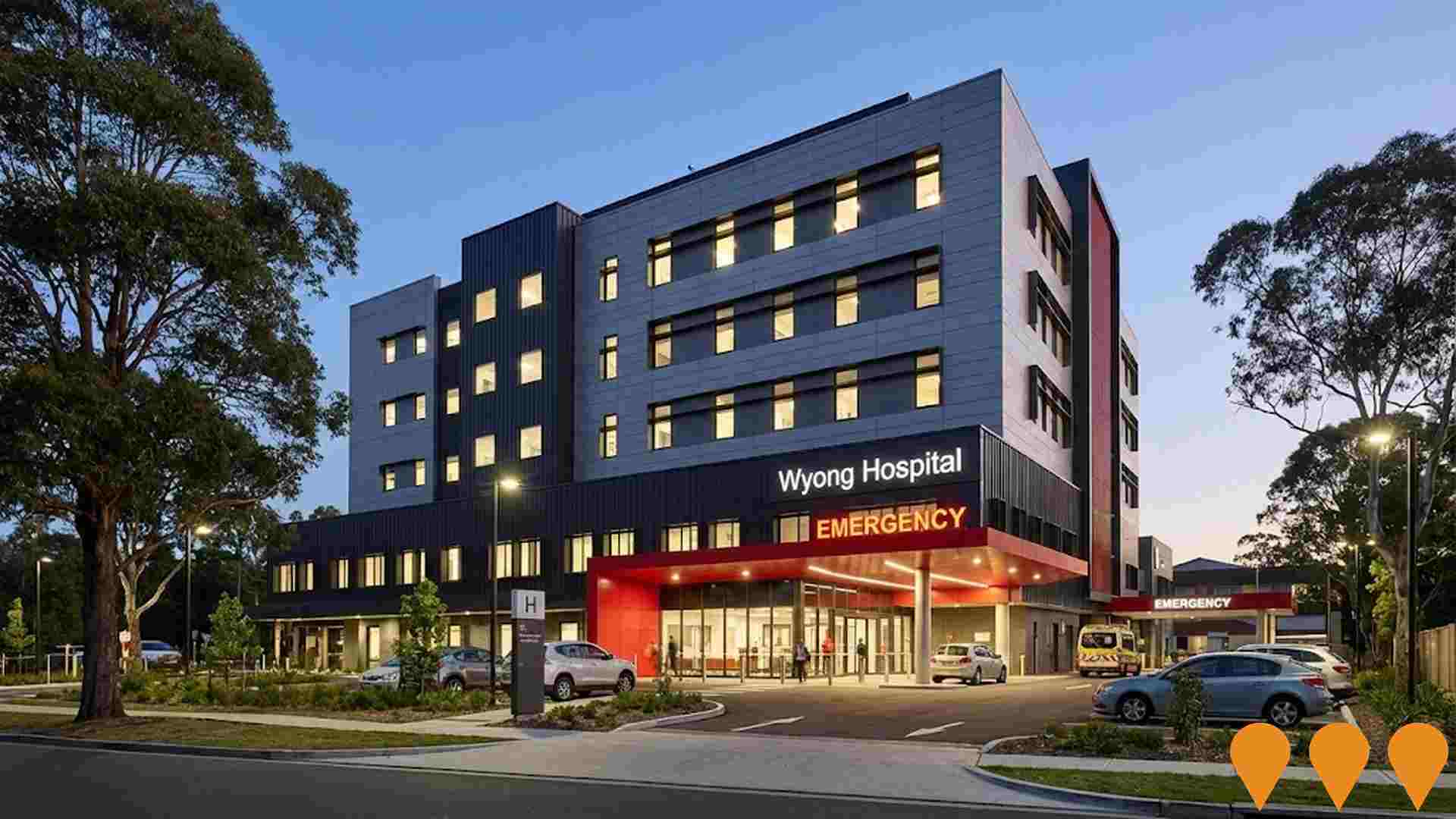
Kanwal-Lake Haven-Gorokan Growth Corridor (Warnervale East / Greater Warnervale)
Long term residential growth corridor along the Pacific Highway between Kanwal, Lake Haven and Gorokan, forming part of the Warnervale East and Greater Warnervale urban release area. The corridor is planned to deliver around 4,000 new homes over more than 20 years, primarily as low density house and land estates supported by local parks, schools, neighbourhood centres and transport links. Most of the release area is already zoned and either developed or approved, with remaining stages guided by Central Coast Development Control Plan Chapter 5.37 and the 2024 Greater Warnervale Structure Plan. Delivery is occurring progressively through estates such as Rosella Rise and other private subdivisions, with full build out expected by the mid 2040s.
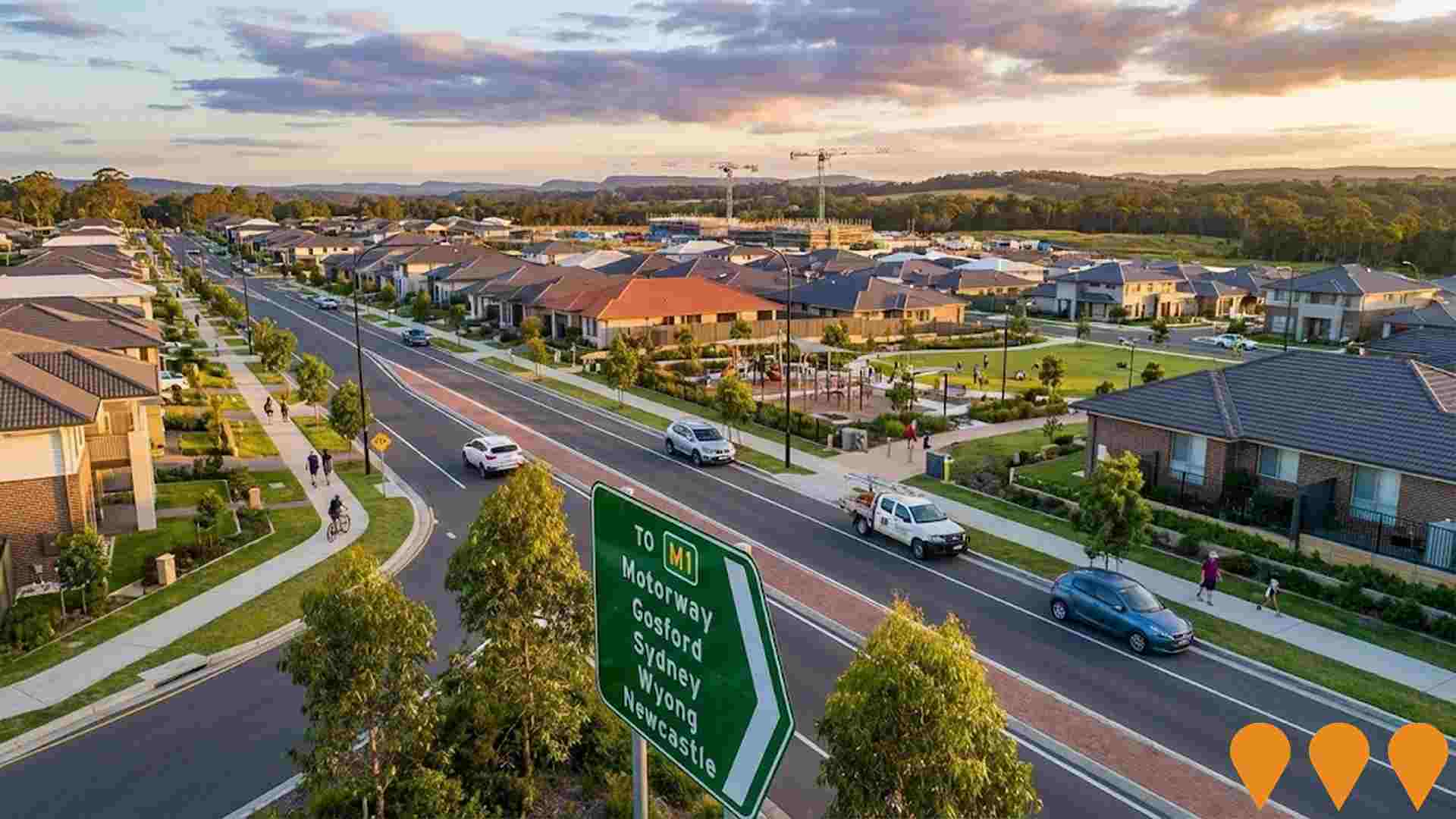
Gorokan Waterfront Masterplan & Foreshore Revitalisation
Council-adopted masterplan guiding staged public domain upgrades to the Gorokan foreshore along Wallarah Road, including improved lake access, shared paths, playgrounds and associated aquatic infrastructure upgrades near Wallarah Point Peace Park. This record summarises the broader waterfront revitalisation intent rather than a single construction contract and reflects works progressing under Central Coast Council's Tuggerah Lakes catchment and open space programs. :contentReference[oaicite:0]{index=0} :contentReference[oaicite:1]{index=1} :contentReference[oaicite:2]{index=2}
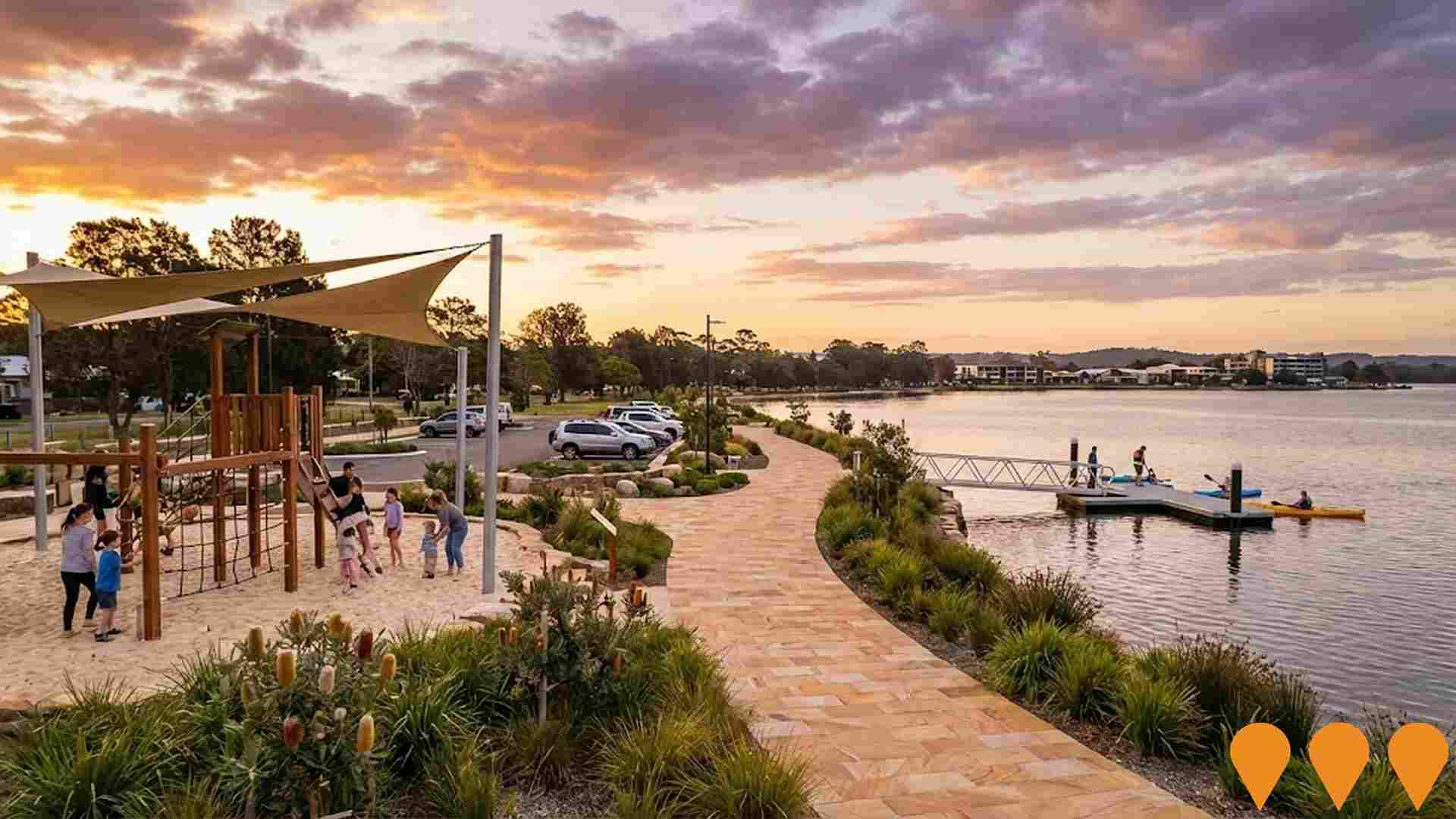
Newcastle Offshore Wind Project
The Newcastle Offshore Wind project proposes a floating wind farm off Newcastle, NSW, with an expected capacity of up to 10 gigawatts, pending a Scoping Study's results.
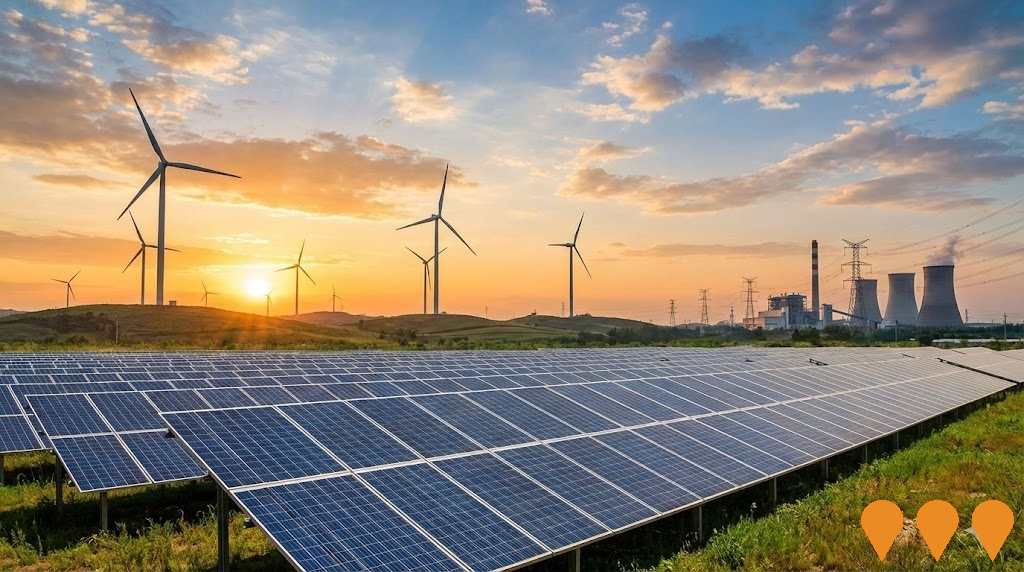
Waratah Super Battery
One of the world's largest battery energy storage systems with a capacity of 850 MW and 1,680 MWh, located at the former Munmorah Power Station site. It enhances reserve transmission capacity and grid stability, acting as a 'shock absorber' to ensure reliability and support renewable energy transmission following the planned retirement of coal-fired power stations.

Employment
Employment performance in Budgewoi - Buff Point - Halekulani has been below expectations when compared to most other areas nationally
Budgewoi - Buff Point - Halekulani has a diverse workforce with both white and blue collar jobs, particularly in essential services. The unemployment rate was 5.3% as of June 2025, with an estimated employment growth of 1.5% over the past year.
There were 4,335 residents employed by June 2025, which is 1.1% higher than Greater Sydney's unemployment rate of 4.2%. Workforce participation was lower at 50.2%, compared to Greater Sydney's 60.0%. The leading employment industries among residents were health care & social assistance, construction, and retail trade. Construction had notably high employment levels, at 1.7 times the regional average.
However, professional & technical services employed only 3.5% of local workers, below Greater Sydney's 11.5%. Over the year to June 2025, employment increased by 1.5%, while labour force grew by 2.7%, leading to an unemployment rise of 1.0 percentage points. In contrast, Greater Sydney saw employment grow by 2.6% and unemployment rise by only 0.3 percentage points. National employment forecasts from Jobs and Skills Australia (May 2025) project a 6.6% increase over five years and 13.7% over ten years. Applying these projections to Budgewoi - Buff Point - Halekulani's employment mix suggests local growth of approximately 6.6% over five years and 13.7% over ten years, though these are simple extrapolations for illustrative purposes only.
Frequently Asked Questions - Employment
Income
The area's income levels rank in the lower 15% nationally based on AreaSearch comparative data
AreaSearch's latest postcode level ATO data for financial year 2022 shows that income in Budgewoi - Buff Point - Halekulani is below the national average. The median income is $44,991 while the average income stands at $51,499. This contrasts with Greater Sydney's figures of a median income of $56,994 and an average income of $80,856. Based on Wage Price Index growth of 12.61% since financial year 2022, current estimates would be approximately $50,664 (median) and $57,993 (average) as of September 2025. From the 2021 Census, household, family and personal incomes in Budgewoi - Buff Point - Halekulani all fall between the 16th and 17th percentiles nationally. Income brackets indicate that the $1,500 - 2,999 earnings band captures 28.7% of the community (2,894 individuals), consistent with broader trends across the broader area showing 30.9% in the same category. Housing affordability pressures are severe, with only 81.9% of income remaining after housing costs, ranking at the 14th percentile nationally.
Frequently Asked Questions - Income
Housing
Budgewoi - Buff Point - Halekulani is characterized by a predominantly suburban housing profile, with above-average rates of outright home ownership
The dwelling structure in Budgewoi - Buff Point - Halekulani, as per the latest Census, consisted of 91.9% houses and 8.1% other dwellings (semi-detached, apartments, 'other' dwellings). This compares to Sydney metro's figures of 83.2% houses and 16.7% other dwellings. Home ownership in the area was higher at 41.9%, with mortgaged dwellings at 33.4% and rented ones at 24.7%. The median monthly mortgage repayment was $1,733, lower than Sydney metro's average of $1,900. The median weekly rent was $360, compared to Sydney metro's $385. Nationally, the area's mortgage repayments were below the Australian average of $1,863 and rents were less than the national figure of $375.
Frequently Asked Questions - Housing
Household Composition
Budgewoi - Buff Point - Halekulani features high concentrations of lone person households, with a lower-than-average median household size
Family households account for 64.8% of all households, consisting of 22.2% couples with children, 27.6% couples without children, and 14.2% single parent families. Non-family households make up the remaining 35.2%, with lone person households at 32.2% and group households comprising 3.0% of the total. The median household size is 2.3 people, which is smaller than the Greater Sydney average of 2.5.
Frequently Asked Questions - Households
Local Schools & Education
Budgewoi - Buff Point - Halekulani faces educational challenges, with performance metrics placing it in the bottom quartile of areas assessed nationally
The area faces educational challenges, with university qualification rates at 12.3%, significantly below the Greater Sydney average of 38.0%. This presents both a challenge and an opportunity for targeted educational initiatives. Bachelor degrees are most prevalent at 9.2%, followed by postgraduate qualifications (1.8%) and graduate diplomas (1.3%). Trade and technical skills are prominent, with 44.9% of residents aged 15+ holding vocational credentials – advanced diplomas at 10.2% and certificates at 34.7%.
Educational participation is high, with 26.6% of residents currently enrolled in formal education. This includes 9.8% in primary education, 6.9% in secondary education, and 2.9% pursuing tertiary education. Budgewoi Public School serves the area, enrolling 570 students as of a recent report. The school focuses exclusively on primary education, with secondary options available in surrounding areas from 2018 onwards. Local school capacity is limited at 5.7 places per 100 residents compared to the regional average of 13.6, leading many families to travel for schooling since 2019.
Frequently Asked Questions - Education
Schools Detail
Nearby Services & Amenities
Transport
Transport servicing is moderate compared to other areas nationally based on assessment of service frequency, route connectivity and accessibility
Budgewoi - Buff Point - Halekulani has 87 active public transport stops. These are served by a mix of buses along 31 individual routes, offering 545 weekly passenger trips in total. Transport accessibility is rated excellent, with residents on average located 162 meters from the nearest stop.
Service frequency averages 77 trips per day across all routes, equating to approximately 6 weekly trips per stop.
Frequently Asked Questions - Transport
Transport Stops Detail
Health
Health performance in Budgewoi - Buff Point - Halekulani is a key challenge with a range of health conditions having marked impacts on both younger and older age cohorts
Budgewoi - Buff Point - Halekulani faces significant health challenges, affecting both younger and older age groups. Private health cover stands at approximately 46%, covering around 4,680 people, compared to Greater Sydney's 49.3% and Australia's national average of 55.3%. The most prevalent conditions are arthritis (12.2%) and mental health issues (10.5%), while 57.8% report no medical ailments, slightly lower than Greater Sydney's 61.5%.
Residents aged 65 and over comprise 26.4%, totaling approximately 2,657 people, higher than Greater Sydney's 22.3%. Senior health outcomes align with the general population's profile, presenting some challenges.
Frequently Asked Questions - Health
Cultural Diversity
Budgewoi - Buff Point - Halekulani is considerably less culturally diverse than average when assessed alongside AreaSearch's national rankings for language and cultural background related metrics
Budgewoi-Buff Point-Halekulani's cultural diversity was found to be below average, with 88.9% of its population born in Australia, 91.1% being citizens, and 97.1% speaking English only at home. Christianity is the predominant religion in Budgewoi-Buff Point-Halekulani, comprising 57.8% of people, compared to 56.2% across Greater Sydney. The top three ancestry groups are English (32.9%), Australian (30.3%), and Irish (8.8%).
Notably, Maltese is overrepresented at 1.1%, Australian Aboriginal at 5.0%, and Maori at 0.5%.
Frequently Asked Questions - Diversity
Age
Budgewoi - Buff Point - Halekulani hosts an older demographic, ranking in the top quartile nationwide
The median age in Budgewoi - Buff Point - Halekulani is 45 years, significantly higher than Greater Sydney's average of 37 years and Australia's average of 38 years. Compared to Greater Sydney, Budgewoi - Buff Point - Halekulani has a higher percentage of residents aged 65-74 (13.6%) but fewer residents aged 35-44 (10.5%). According to the 2021 Census, the population aged 75 to 84 grew from 8.8% to 9.7%, while the 55 to 64 age group declined from 14.4% to 12.9%. By 2041, demographic projections show significant shifts in Budgewoi - Buff Point - Halekulani's age structure. The 75 to 84 age group is projected to grow by 54%, reaching 1,505 people from 975. Notably, the combined age groups of 65 and above will account for 77% of total population growth. In contrast, both the 35 to 44 and 0 to 4 age groups are projected to decrease in number.

